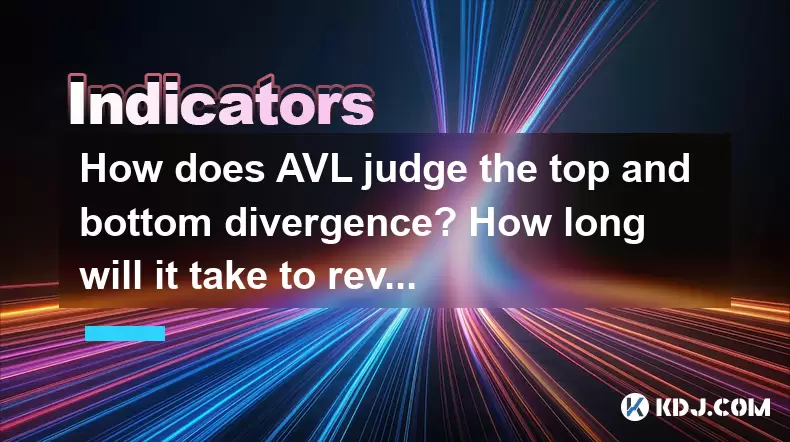-
 Bitcoin
Bitcoin $120400
1.77% -
 Ethereum
Ethereum $3615
7.90% -
 XRP
XRP $3.580
17.84% -
 Tether USDt
Tether USDt $1.001
0.06% -
 BNB
BNB $729.4
1.25% -
 Solana
Solana $179.9
5.04% -
 USDC
USDC $0.0000
0.01% -
 Dogecoin
Dogecoin $0.2311
8.22% -
 TRON
TRON $0.3226
4.04% -
 Cardano
Cardano $0.8490
12.85% -
 Hyperliquid
Hyperliquid $46.45
0.72% -
 Stellar
Stellar $0.4913
8.54% -
 Sui
Sui $4.027
2.00% -
 Chainlink
Chainlink $18.51
11.67% -
 Hedera
Hedera $0.2818
21.51% -
 Avalanche
Avalanche $24.03
7.40% -
 Bitcoin Cash
Bitcoin Cash $508.5
2.90% -
 Shiba Inu
Shiba Inu $0.00001496
3.24% -
 UNUS SED LEO
UNUS SED LEO $8.961
1.83% -
 Toncoin
Toncoin $3.264
3.13% -
 Litecoin
Litecoin $104.6
8.15% -
 Polkadot
Polkadot $4.389
6.11% -
 Uniswap
Uniswap $9.924
10.63% -
 Monero
Monero $337.9
0.49% -
 Pepe
Pepe $0.00001376
2.79% -
 Bitget Token
Bitget Token $4.830
2.46% -
 Ethena USDe
Ethena USDe $1.001
0.05% -
 Dai
Dai $1.000
0.02% -
 Aave
Aave $325.2
1.66% -
 Bittensor
Bittensor $423.7
-0.85%
How does AVL judge the top and bottom divergence? How long will it take to reverse after it appears?
AVL helps identify market tops and bottoms; top divergence signals weakening momentum, while bottom divergence indicates fading selling pressure.
Jun 02, 2025 at 04:56 am

Understanding AVL and Divergence
AVL, or Average Volume Line, is a technical indicator used in the cryptocurrency market to analyze trading volume trends over time. It helps traders identify potential tops and bottoms in the market by comparing the current volume to an average volume calculated over a specified period. Divergence, on the other hand, occurs when the price of an asset moves in the opposite direction of a technical indicator, such as the AVL. Top divergence is observed when the price reaches a new high, but the AVL fails to confirm this high, suggesting weakening momentum. Bottom divergence happens when the price hits a new low, but the AVL does not follow suit, indicating potential exhaustion in selling pressure.
Identifying Top Divergence with AVL
To identify top divergence using the AVL, traders should follow these steps:
- Monitor Price Highs: Keep track of the price highs on the chart. A new high indicates a potential top.
- Compare with AVL: Simultaneously, observe the AVL. If the price reaches a new high, but the AVL does not, this indicates a top divergence.
- Confirm with Other Indicators: To increase the reliability of the signal, use additional indicators such as the Relative Strength Index (RSI) or Moving Average Convergence Divergence (MACD) to confirm the divergence.
An example of top divergence could be when Bitcoin reaches a new high of $60,000, but the AVL remains below its previous peak, suggesting that the upward momentum is weakening.
Identifying Bottom Divergence with AVL
Bottom divergence with the AVL can be identified by following these steps:
- Track Price Lows: Monitor the price lows on the chart. A new low suggests a potential bottom.
- Compare with AVL: Observe the AVL. If the price reaches a new low, but the AVL does not, this indicates a bottom divergence.
- Use Additional Indicators: Confirm the divergence with other technical indicators like the RSI or MACD.
For instance, if Ethereum drops to a new low of $1,500, but the AVL stays above its previous low, this could signal that the downward momentum is fading, potentially indicating a bottom.
The Timing of Reversal After Divergence
The timing of a market reversal after the appearance of divergence can vary significantly. Several factors influence this:
- Market Conditions: Bullish or bearish market sentiment can affect how quickly a reversal occurs.
- Volume Confirmation: A significant increase in volume following the divergence can accelerate the reversal.
- Time Frame: Divergence on shorter time frames may lead to quicker reversals compared to longer time frames.
Generally, a reversal might take anywhere from a few days to several weeks after the divergence is spotted. For example, if a top divergence is identified on a daily chart, a reversal might occur within a week if volume confirms the signal. However, on a weekly chart, it could take several weeks for the reversal to materialize.
Practical Example of AVL Divergence
To illustrate how AVL divergence works in practice, consider the following scenario:
- Bitcoin Price Action: Bitcoin's price reaches a new high of $65,000, but the AVL does not confirm this high, staying below its previous peak.
- Trader's Action: A trader notices this top divergence and decides to take a short position, anticipating a reversal.
- Volume Confirmation: A few days later, trading volume spikes, and Bitcoin's price starts to decline, confirming the reversal.
In another example:
- Ethereum Price Action: Ethereum's price drops to a new low of $1,400, but the AVL remains above its previous low.
- Trader's Action: A trader identifies this bottom divergence and decides to enter a long position, expecting a reversal.
- Volume Confirmation: Over the next two weeks, Ethereum's price begins to rise as volume increases, validating the reversal signal.
Using AVL Divergence in Trading Strategies
Incorporating AVL divergence into trading strategies requires a systematic approach:
- Set Clear Entry and Exit Points: Determine specific price levels for entering and exiting trades based on the divergence signals.
- Risk Management: Use stop-loss orders to manage potential losses if the expected reversal does not occur.
- Combine with Other Indicators: Use other technical indicators to confirm the divergence and increase the probability of a successful trade.
For example, a trader might set an entry point for a short trade when a top divergence is confirmed by the RSI and a stop-loss order above the recent high to limit potential losses.
Frequently Asked Questions
Q: Can AVL divergence be used on all cryptocurrencies?
A: Yes, AVL divergence can be applied to any cryptocurrency that has sufficient trading volume and price data. However, the reliability of the signals may vary depending on the liquidity and market conditions of the specific cryptocurrency.
Q: How does the choice of time frame affect the interpretation of AVL divergence?
A: The choice of time frame can significantly impact the interpretation of AVL divergence. Shorter time frames, such as hourly or daily charts, may provide more frequent but potentially less reliable signals compared to longer time frames like weekly or monthly charts, which offer fewer but more significant signals.
Q: Are there any specific tools or platforms that are recommended for analyzing AVL divergence?
A: Many trading platforms and charting software support the AVL indicator, such as TradingView, MetaTrader, and Coinigy. These platforms allow traders to customize the AVL settings and combine it with other indicators for comprehensive analysis.
Q: How can traders differentiate between a false divergence and a genuine one?
A: Differentiating between false and genuine divergence involves using multiple indicators and waiting for volume confirmation. A false divergence may not be supported by other indicators or may lack a significant increase in volume, while a genuine divergence is often confirmed by additional technical signals and a clear volume spike.
Disclaimer:info@kdj.com
The information provided is not trading advice. kdj.com does not assume any responsibility for any investments made based on the information provided in this article. Cryptocurrencies are highly volatile and it is highly recommended that you invest with caution after thorough research!
If you believe that the content used on this website infringes your copyright, please contact us immediately (info@kdj.com) and we will delete it promptly.
- MEXC's Q2 Domination: Riding the Crypto Wave to Market Leadership
- 2025-07-18 18:30:12
- Caldera (ERA) Takes Flight: Binance Listing Ignites Crypto Surge
- 2025-07-18 19:10:13
- Hex Trust and Algorand: Institutional Staking Rewards Take Center Stage
- 2025-07-18 19:50:13
- XRP, Ethereum, and the Crypto Rotation: Where's the Smart Money Going?
- 2025-07-18 19:15:13
- DeFi Lending, Fintech, and Morpho: A New Era?
- 2025-07-18 19:50:13
- Ethereum, Litecoin, and Institutional Crypto: What's the Deal?
- 2025-07-18 19:55:13
Related knowledge

Advanced RSI strategies for crypto
Jul 13,2025 at 11:01am
Understanding the Basics of RSI in Cryptocurrency TradingThe Relative Strength Index (RSI) is a momentum oscillator used to measure the speed and chan...

Crypto RSI for day trading
Jul 12,2025 at 11:14am
Understanding RSI in the Context of Cryptocurrency TradingThe Relative Strength Index (RSI) is a momentum oscillator used to measure the speed and cha...

Crypto RSI for scalping
Jul 12,2025 at 11:00pm
Understanding RSI in the Context of Crypto TradingThe Relative Strength Index (RSI) is a momentum oscillator widely used by traders to measure the spe...

What does an RSI of 30 mean in crypto
Jul 15,2025 at 07:07pm
Understanding RSI in Cryptocurrency TradingRelative Strength Index (RSI) is a momentum oscillator widely used in cryptocurrency trading to measure the...

What does an RSI of 70 mean in crypto
Jul 13,2025 at 06:07pm
Understanding the RSI Indicator in Cryptocurrency TradingThe Relative Strength Index (RSI) is a widely used technical analysis tool that helps traders...

Does RSI work in a bear market for crypto
Jul 16,2025 at 01:36pm
Understanding RSI in Cryptocurrency TradingThe Relative Strength Index (RSI) is a momentum oscillator used by traders to measure the speed and change ...

Advanced RSI strategies for crypto
Jul 13,2025 at 11:01am
Understanding the Basics of RSI in Cryptocurrency TradingThe Relative Strength Index (RSI) is a momentum oscillator used to measure the speed and chan...

Crypto RSI for day trading
Jul 12,2025 at 11:14am
Understanding RSI in the Context of Cryptocurrency TradingThe Relative Strength Index (RSI) is a momentum oscillator used to measure the speed and cha...

Crypto RSI for scalping
Jul 12,2025 at 11:00pm
Understanding RSI in the Context of Crypto TradingThe Relative Strength Index (RSI) is a momentum oscillator widely used by traders to measure the spe...

What does an RSI of 30 mean in crypto
Jul 15,2025 at 07:07pm
Understanding RSI in Cryptocurrency TradingRelative Strength Index (RSI) is a momentum oscillator widely used in cryptocurrency trading to measure the...

What does an RSI of 70 mean in crypto
Jul 13,2025 at 06:07pm
Understanding the RSI Indicator in Cryptocurrency TradingThe Relative Strength Index (RSI) is a widely used technical analysis tool that helps traders...

Does RSI work in a bear market for crypto
Jul 16,2025 at 01:36pm
Understanding RSI in Cryptocurrency TradingThe Relative Strength Index (RSI) is a momentum oscillator used by traders to measure the speed and change ...
See all articles

























































































